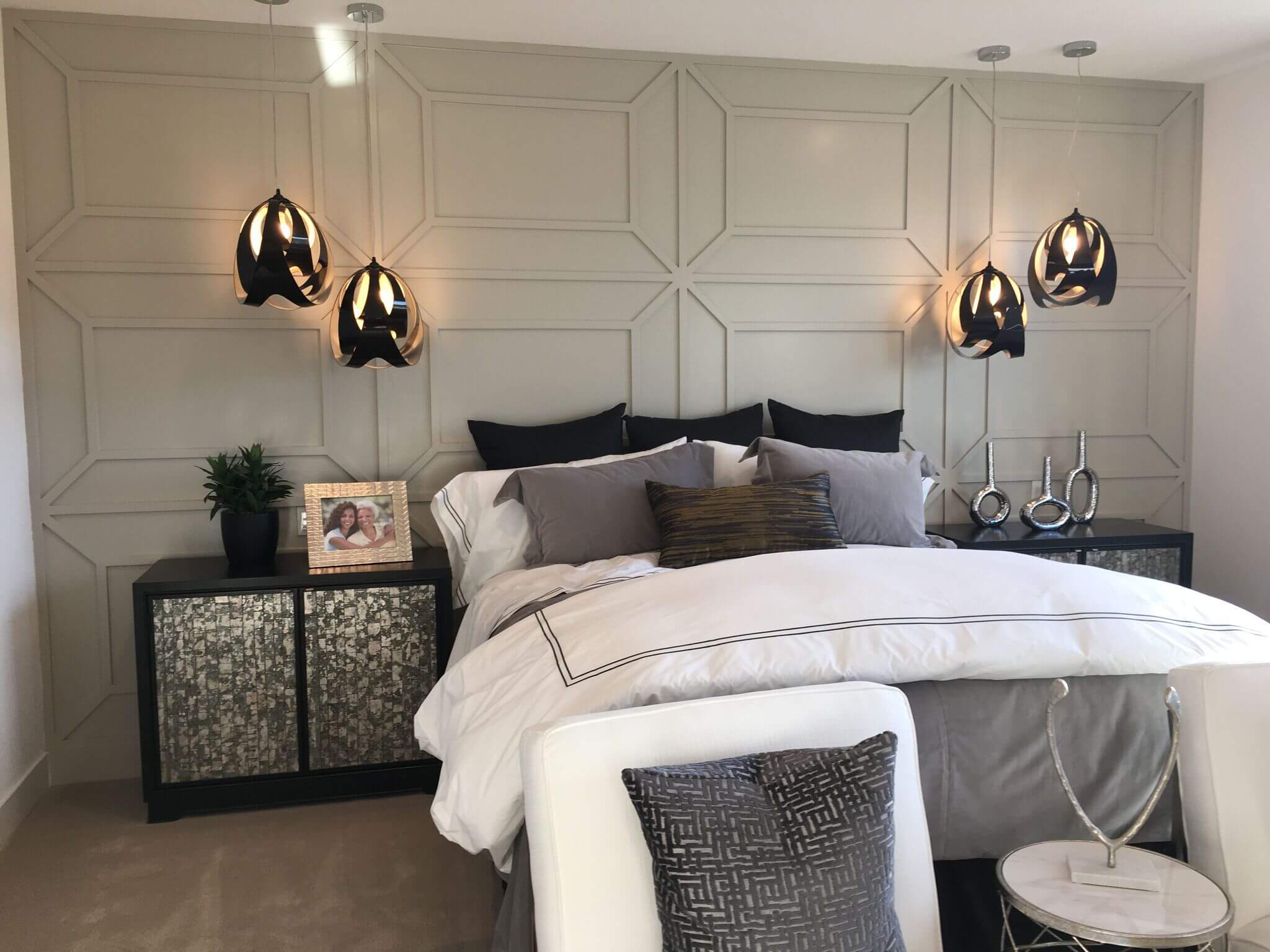Adding wall detail: stock molding, full wall wainscot with accent paint color.
So many elements go into creating a finished living space, be it a family room, bedroom of even an outdoor room. And even though the end result should be tailored to each particular client, the steps to achieve a finished result boil down to these 5 steps. Let me take you through my 5 steps to a finished space.
1: Understand the Building Envelope.
This will include size of the room, placement and size of windows and doors, architectural elements such as a fireplace or built-in cabinetry, traffic patterns through the space and to adjacent rooms, natural light and existing light fixtures in the space. This information is key to making recommendations for window coverings, furniture layout and scale of pieces, and additional ceiling or wall lighting fixtures, as well as table and floor lamps.
2: Understand the Client's Aesthetic
DIY or professional, having a clear vision of the goal helps make the right selections. Are there inspiration images to pull from? What is the intended feel and style for the space, is there an obvious focal point to play on, color preferences- bold or tamed? How adventurous, how motivated or handy is the client? What does the budget allow?
Creating a virtual rendering of suggested decor items may go a long way to making important adjustments and avoiding costly mistakes. Virtual renderings can place the client in the space with art scaled and window treatments. rug and selected fabric for sofa and decorative pillows - I can get that much closer to fulfilling expectations.
3: Understand the Intended Room Function
Is this a family room that will double as a playroom for young kids and an entertaining space for adults? Or a master bedroom that will the the one sanctuary in the house? Are there pets to consider or a multi-generation family with special needs.
4: Start from the Ground Up
With all the information in hand I find it easier to start from flooring finishes - layering rugs where appropriate to create the anchor where furniture will reside. Here is a helpful summary for sizing of your rug https://www.wayfair.com/ideas-and-advice/area-rug-size-guide-S4828.html
The furniture layout will revolve around the function of the space, the desired traffic pattern, and the focal point I want to highlight. If no architectural feature naturally creates such a focal point: either paint, wallpaper, or textural accent could create the effect, or maybe a unique piece of art will do it.
Trim and wall colors will complement the inherent natural lighting, and a well-scaled chandelier, or architectural floor lamp may help create the perfect evening mood. All room lighting should be on dimmers to add versatility. For great rooms and most-used spaces where the original build may not have included recessed ceiling lighting, I often recommend additional LED recessed fixtures- also on dimmers.
Seating textiles and color will be suited to the client's lifestyle, with accent pillows and throws adding pattern and scale. Accent furniture will be scaled to the space, key functions satisfied first, then each piece styled to complete the balance of the room.
Every wall will be planned, the art inspired by the color palette, with meaning for the client if at all possible. Table lighting will be situated near reading spots: I love how these lamps can be placed anywhere in a living space https://www.modernlantern.com/.
Copper metallic paint highlighting coffered trim detail in a dining room.
Art can be a challenge with small budgets: in informal spaces, travel photos framed and matted can make a fantastic inexpensive collage to fill an entire wall, or rustic shelves filled with a few plants and books would do the same. Estate sales can be a great source of large picture frames - a little work and a favorite print could then be given pride of space. Easy care plants in handsome pots populate corners and add life to a space. Consider your ceiling for an extra punch in your space: adding moldings or an accent paint color, will pop with evening lighting.
5: Splurge on Automation
The seamless ability to adjust window coverings, lighting, home security, and heating and cooling to daily needs and seasonal variations is now available at one's fingertips. With today's busy lifestyles, investing in these technologies may well be the favorite aspect of a room remodel.











